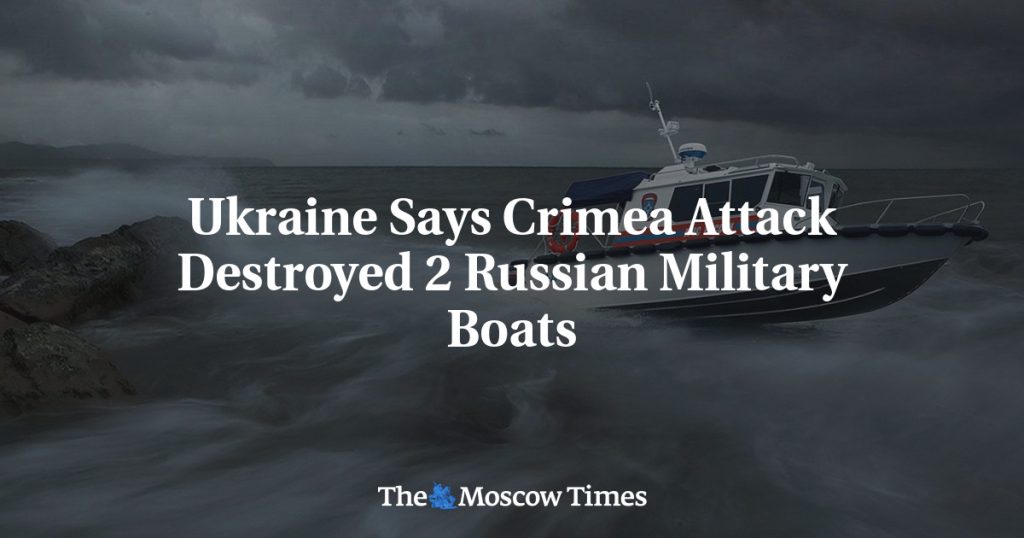In recent developments, Ukraine’s GUR military intelligence service reported that their forces used naval drones to destroy two Russian patrol boats near Crimea. The operation was carried out by the Group 13 special forces unit and was successful despite Russia’s attempts to defend their boats with fighter planes, helicopters, and small arms fire. The GUR released video footage showing Russian aircraft firing into the water and bright flashes of fire coming from the coast, but ultimately the Ukrainian drones were able to complete their mission and destroy the boats. The boats were identified as high-speed amphibious vessels of the KS-701 Tunets type.
Following the naval drone strike, Ukraine reported civilian casualties due to Russian shelling in the Kharkiv and Kherson regions. Meanwhile, Russia claimed that a Ukrainian drone strike on a car carrying agricultural workers resulted in one death and nine injuries in the Belgorod region. Moscow also stated that they had destroyed two Ukrainian naval drones en route to Crimea and intercepted 13 aerial drones in the Krasnodar region and over the Black Sea. Additionally, Russia reported shooting down eight tactical ATACMS missiles over the Sea of Azov near Crimea and later announced that the Black Sea fleet had destroyed an additional four Ukrainian naval drones.
As the conflict between Ukraine and Russia escalates, Ukraine has been responding to Russian aggression by targeting energy infrastructure across the border, taking the fight to Russian soil. In a separate incident, Russia’s FSB security service claimed to have thwarted a series of sabotage attacks planned by Ukrainian special services on railway lines in Crimea. The FSB reported detaining four local residents recruited by Ukraine, while their leader, a Russian citizen, was killed during capture by an exploding IED. Russian news agencies released footage showing confiscated cartridges, an old machine gun, a pistol, and a Kalashnikov, suggesting a planned attack on trains with rockets.
Tensions between Ukraine and Russia have been ongoing for years, with Ukraine facing continuous bombardments from Russia. In response, Ukraine has been resorting to offensive tactics to push back against Russian aggression. The latest use of naval drones to destroy Russian patrol boats near Crimea is just one example of Ukraine’s efforts to defend its territory and target Russian forces. The casualties on both sides indicate the seriousness of the conflict and the impact it is having on civilian populations caught in the crossfire.
The use of drones in military operations has become increasingly common in conflicts around the world. Drones provide advantages in terms of surveillance, reconnaissance, and targeted strikes, allowing military forces to carry out precise and effective attacks on enemy targets. In the case of Ukraine’s naval drones destroying Russian patrol boats, the operation demonstrates the strategic use of technology to counter Russian aggression and disrupt enemy forces. As the conflict between Ukraine and Russia continues, we can expect to see further developments in the use of drones and other advanced military technologies by both sides in the ongoing struggle for control and dominance in the region.
Overall, the recent events in the conflict between Ukraine and Russia highlight the complex dynamics at play in the region. From naval drone strikes to civilian casualties and thwarted sabotage attempts, the situation is rapidly evolving and tensions are high. Both Ukraine and Russia are engaged in a protracted conflict, with each side resorting to offensive tactics to gain the upper hand. The use of technology such as drones and the targeting of critical infrastructure underscore the intensity of the conflict and the lengths to which each side is willing to go to achieve their objectives. It remains to be seen how the situation will develop further and what impact it will have on the wider region and international relations.


